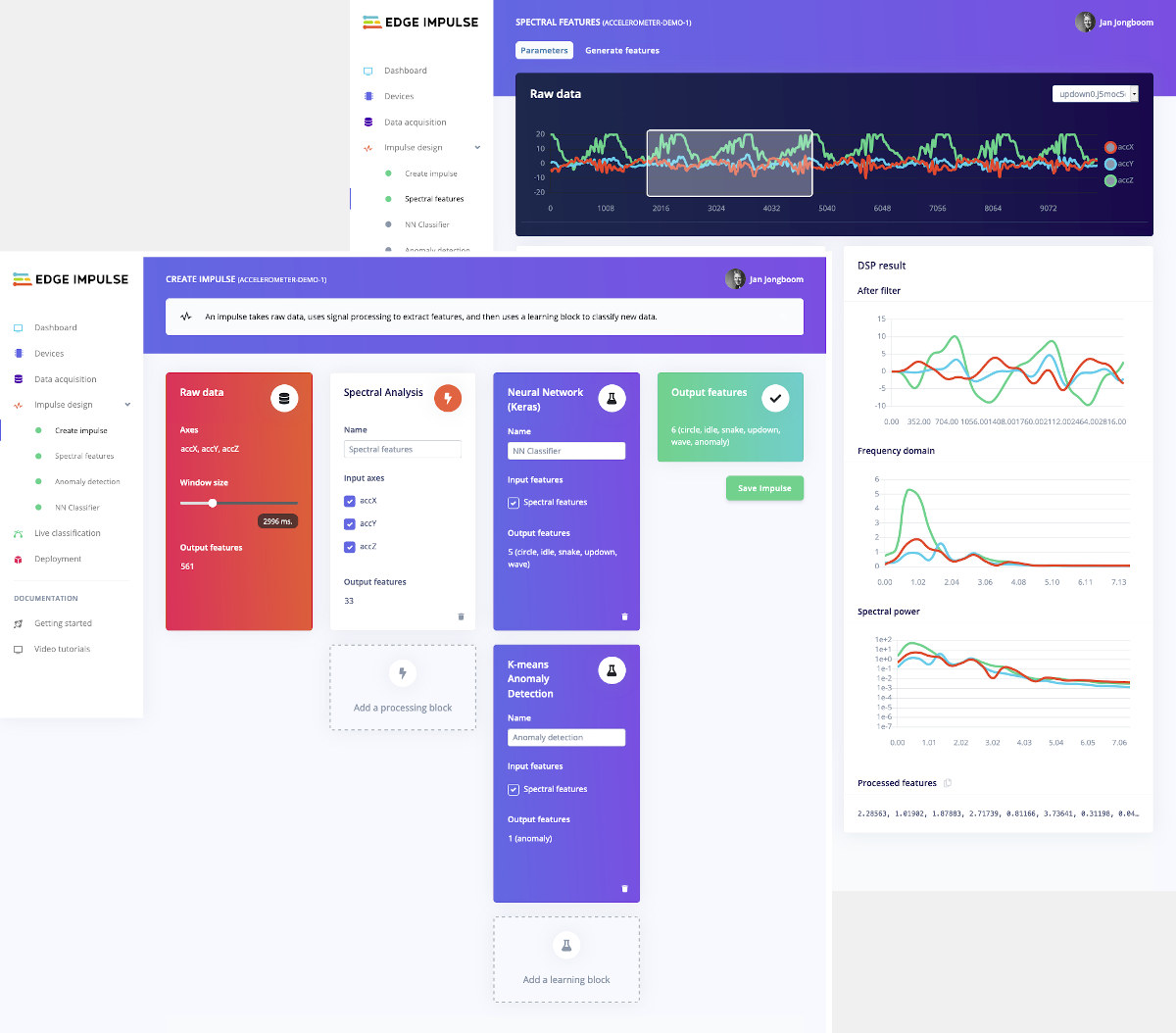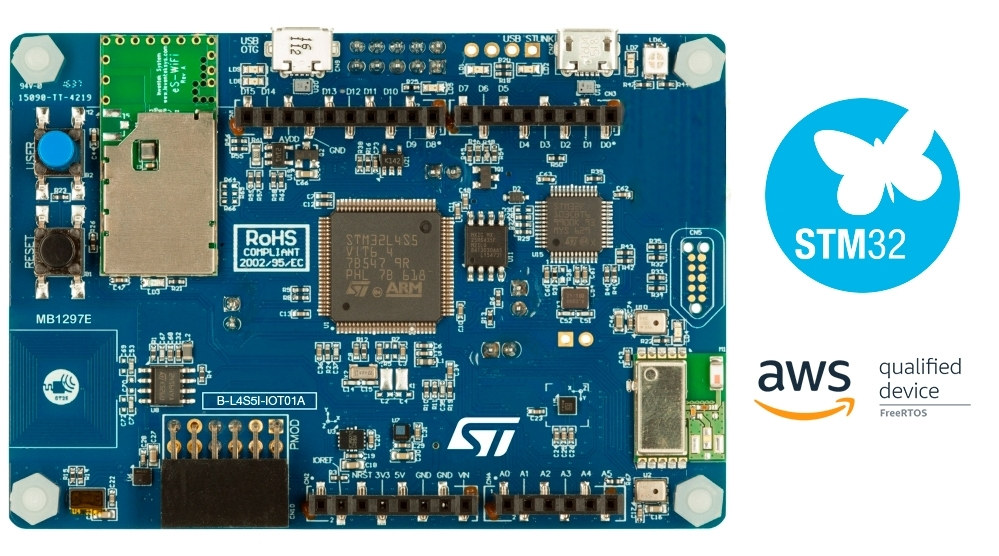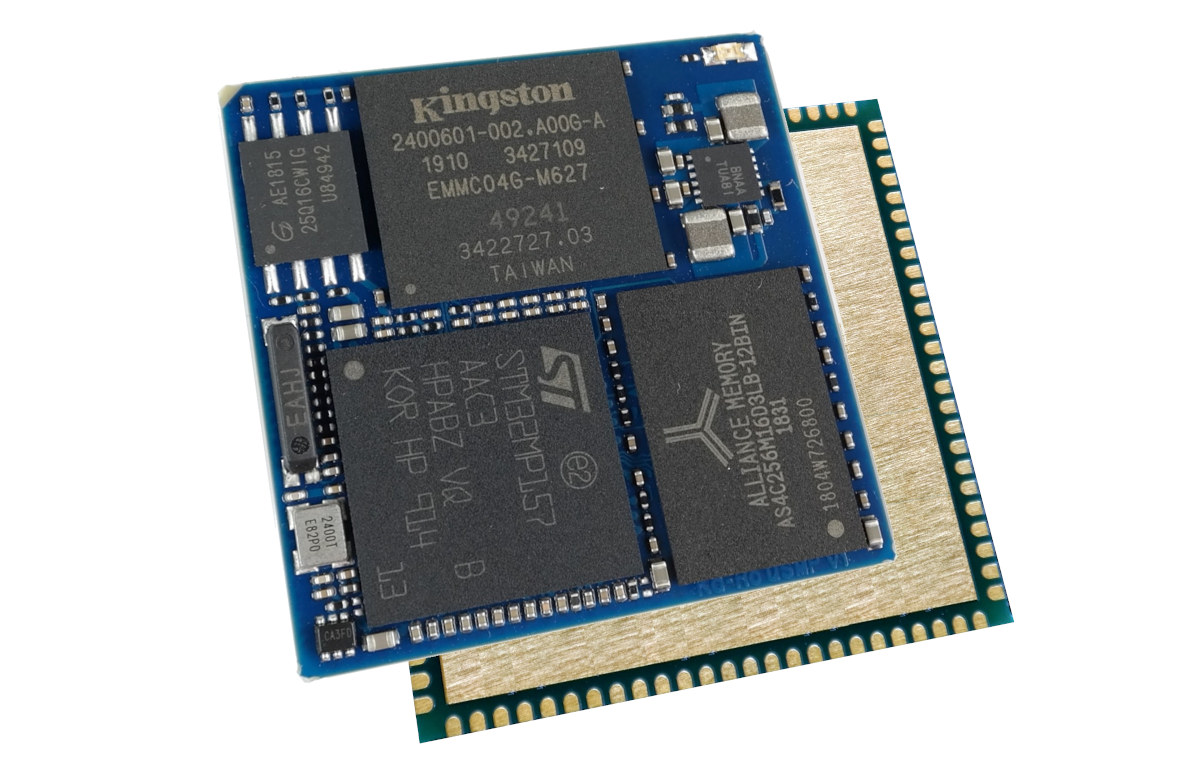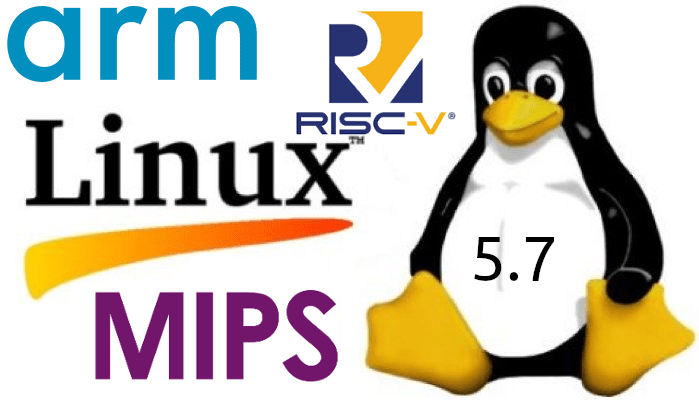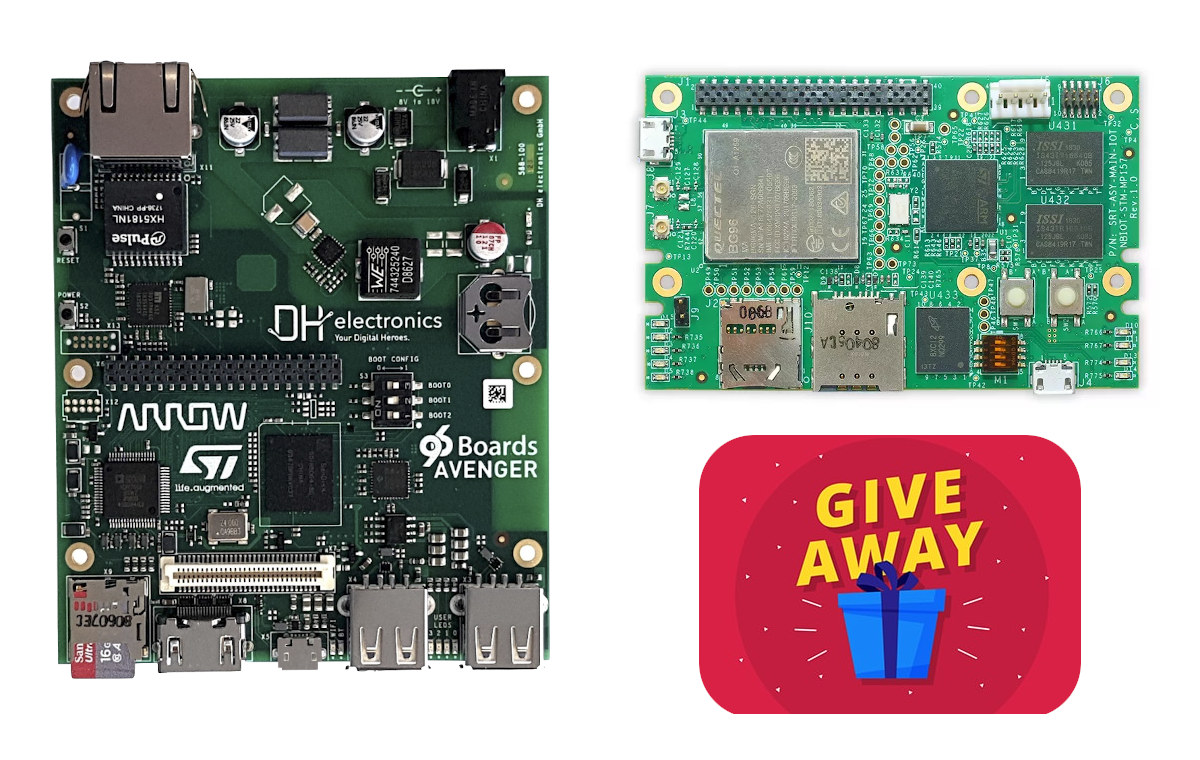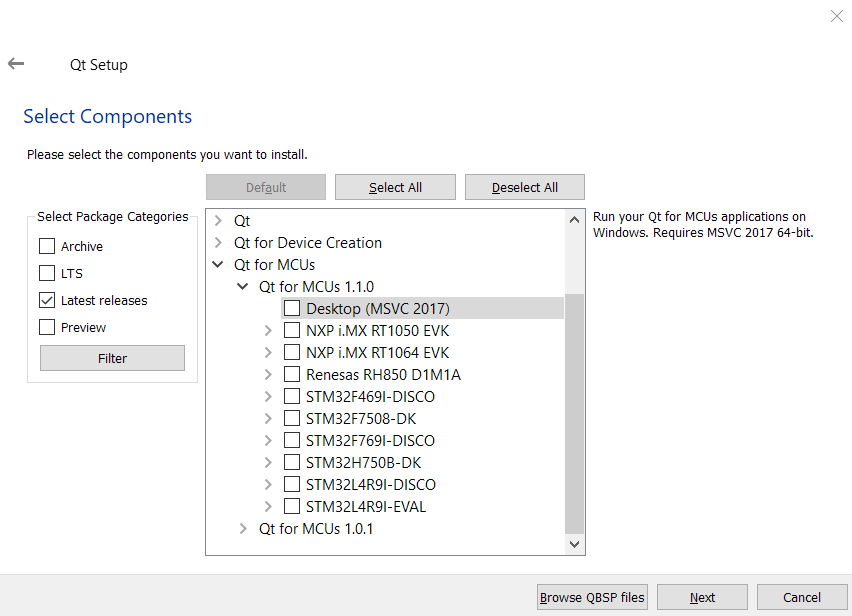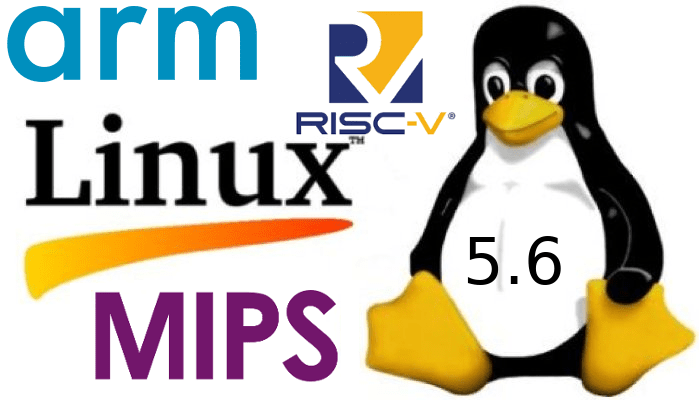Artificial intelligence used to happen almost exclusively in the cloud, but this introduces delays (latency) for the users and higher costs for the provider, so it’s now very common to have on-device AI on mobile phones or other systems powered by application processors. But recently there’s been a push to bring machine learning capabilities to even lower-end embedded systems powered by microcontrollers, as we’ve seen with GAP8 RISC-V IoT processor or Arm Cortex-M55 core and the Ethos-U55 micro NPU for Cortex-M microcontrollers, as well as Tensorflow Lite. Edge Impulse is another solution that aims to ease deployment of machine learning applications on Cortex-M embedded devices (aka Embedded ML or TinyML) by collecting real-world sensor data, training ML models on this data in the cloud, and then deploying the model back to the embedded device. The company collaborated with Arduino and announced support for the Arduino Nano 33 BLE Sense and […]
STM32 IoT Discovery Kit Runs AWS-Ready FreeRTOS, Supports Arduino and Pmod Expansion Boards
STMicroelectronics STM32 IoT Discovery Kit is supposed to ease software development for IoT nodes thanks to a qualified port of FreeRTOS integrated into the STM32Cube ecosystem, and ready to connect to Amazon Web Services (AWS). The hardware is comprised of an STM32L4+ Cortex-M4F microcontroller, various MEMS sensors, a secure element, and offers WiFi, Bluetooth 4.2, and NFC connectivity. STM32 IoT Discovery Kit (B-L4S5I-IOT01A) key features and specifications: MCU – STMicro STM32L4+ (STM32L4S5VIT6) Arm Cortex-M4F microcontroller with 2 MB Flash, 640 KB RAM in LQFP100 package storage – 64 Mbit Quad-SPI Flash Connectivity Bluetooth 4.1 module (STMicro SPBTLE-RF) 802.11 b/g/n compliant Wi-Fi module (Inventek ISM43362-M3G-L44) Dynamic NFC tag based on ST25DV04K with its printed NFC antenna USB – Micro USB OTG port STMicro Sensors 2 digital omnidirectional microphones (MP34DT01) Relative humidity and temperature sensor (HTS221) 3-axis magnetometer (LIS3MDL) 3D accelerometer and 3D gyroscope (LSM6DSL) 260-1260 hPa absolute digital output barometer (LPS22HB) […]
STMicro STM32WL Wireless MCU Gets Wireless M-Bus Stack for Smart Meters
STMicro STM32WL was introduced as the world’s first LoRa SoC last year as it combined an STM32L4 Arm Cortex-M4 microcontroller with Semtech SX126x LoRa radio. The company has now partnered with Stackforce to develop a wireless M-Bus (wM-Bus) software stack that leverages the integrated sub-GHz radio and multiple modulation schemes supported by STM32WL microcontrollers. Wireless M-Bus (Wireless Meter Bus) is a wireless protocol specifically designed for remote reading of smart meters, generally gas, water, or electricity meters. The wM-Bus stack developed by Stackforce is said to comply with most of EN 13757-3/-7 specifications from lower to upper layers. The stack notably supports Wireless M-BUS modes S, T and C used throughout Europe in the 868MHz band, as well as the mode N for operation at 169MHz that also happens to be Wize frequency. Stackforce Wireless M-Bus stack for STM32WL also meets requirements for several other metering standards, including the Open […]
Linux powered STMicro STM32MP1 Solder-down QFN-Style SoM Measures 27x27mm
STMicro STM32MP1 Cortex A7/M4 processor was launched last year with support for Linux and Android. Since then we’ve seen a few STM32MP1 SBC‘s, development kit and modules, with some of the latter really compact with DHCOR STM32MP157 SoM found on Avenger96 board measuring just 29x29mm. Direct Insight has now unveiled QFN-style solder-down QSMP systems-on-module based on STM32MP1 that measure just 27 x 27 x 2.3mm and manufactured in Germany by Ka-Ro Electronics. Direct Insight / Ka-Ro STM32MP1 QSMP modules specifications: SoC QSMP-1510 module – STMicro STM32MP151A single-core Cortex-A7 processor up to 650 Mhz, plus Arm Cortex-M4 real-time core up to 200 MHz QSMP-1530 module – STMicro STM32MP153A dual-core Cortex -A7 processor up to 650 MHz, plus Arm Cortex-M4 real-time core up to 200 MHz QSMP-1570 module – STM32MP157C dual-core Cortex -A7 processor up to 650 MHz, plus Arm Cortex-M4 real-time core up to 200 MHz and Vivante 3D GPU with […]
Linux 5.7 Released – Main Changes, Arm, MIPS and RISC-V Architectures
OK… I’m a bit late on that one. Linus Torvalds released Linux 5.7 last week: So we had a fairly calm last week, with nothing really screaming “let’s delay one more rc”. Knock wood – let’s hope we don’t have anything silly lurking this time, like the last-minute wifi regression we had in 5.6.. But embarrassing regressions last time notwithstanding, it all looks fine. And most of the discussion I’ve seen the last week or two has been about upcoming features, so the merge window is now open and I’ll start processing pull requests tomorrow as usual. But in the meantime, please give this a whirl. We’ve got a lot of changes in 5.7 as usual (all the stats look normal – but “normal” for us obviously pretty big and means “almost 14 thousand non-merge commits all over, from close to two thousand developers”), So the appended shortlog is only […]
Stinger96 (NB-IoT + eMTC) and Avenger96 96Boards STM32MP1 SBCs Giveaway
96Boards, Arrow Electronics, STMicro, and Shiratech have joined hands to organize a giveaway event with up to 500 Avenger96 or Stinger96 boards going to lucky winners. I’ve already covered STM32MP1 powered Avenger96 SBC compliant with 96boards CE Extended specification, but I’ve never heard about Stinger96 board, so before going into the giveaway rules, let’s have a closer look at this new 96Boards board designed by Israel based Shiratech. Stinger96 96Boards NB-IoT + eMTC SBC Specifications: SoC – STMicro STM32MP157 dual-core Arm Cortex-A7 processor @ up to 650 MHz (4158 CoreMark) with Arm Cortex-M4F MCU @ up to 200 MHz (673 CoreMark), 708KB internal SRAM System Memory – 256M x 32-bit DDR3 (1GB RAM) Storage – 8Gbit SLC NAND Flash, MicroSD card slot Connectivity Gigabit Ethernet header (via Microchip KSZ9031RNX) GPS, NB-IoT & eMTC (LTE Cat M1) IoT cellular connectivity with 2G fallback via Quectel BG96 module, SIM card slot, and […]
Qt for MCUs 1.1 Adds Support for more STM32 and NXP i.MX RT Boards, FreeRTOS
The first stable version of Qt for MCUs was released in August 2019 in order to bring Qt graphical toolkit to microcontrollers such as STMicro STM32F7, Renesas RH850, or NXP i.MX RT1050. Qt for MCUs would run bare metal on supported boards, and software engineers would develop graphical interface using QML and C++. Qt for MCUs 1.1 has just been released with the addition of more STM32 and i.MX RT boards, support for FreeRTOS real-time operating system, and more. Qt for MCUs 1.1 highlights: Five new supported boards: NXP i.MX RT 1064 EVK, STM32 H750B-DK, STM32 F469i-disco, STM32 L4R9i-disco, and STM32 L4R9i-eval Asset management Optional PNG compressions for assets to lower storage footprint Option to read data directly from flash memory for lower RAM consumption, or copy to RAM for better performance, at the cost of higher RAM consumption. FreeRTOS support (technology preview) to run background tasks without blocking the […]
Linux 5.6 Release – Main Changes, Arm, MIPS & RISC-V Architectures
Linus Torvalds has just announced the release of Linux 5.6 on the Linux Kernel Mailing List: So I’ll admit to vacillating between doing this 5.6 release and doing another -rc. This has a bit more changes than I’d like, but they are mostly from davem’s networking fixes pulls, and David feels comfy with them. And I looked over the diff, and none of it looks scary. It’s just slightly more than I’d have preferred at this stage – not doesn’t really seem worth delaying a release over. So about half the diff from the final week is network driver fixlets, and some minor core networking fixes. Another 20% is tooling – mostly bpf and netfilter selftests (but also some perf work). The rest is “misc” – mostly random drivers (gpio, rdma, input) and DTS files. With a smattering of fixes elsewhere (a couple of afs fixes, some vm fixes, etc). […]


